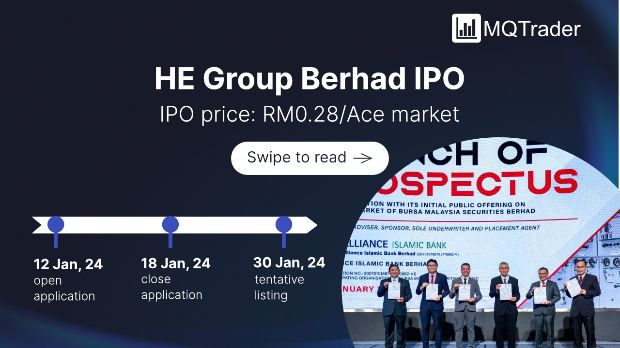My Portfolio Return, Market Efficiency and Myths, Magic Formula, Diversification, Blah Blah Blah
kcchongnz
Publish date: Sat, 02 Aug 2014, 09:05 PM
My Portfolio Return, Market Efficiency and Myths, Magic Formula, Diversification, Blah Blah Blah
In January 2013, about one and a half year ago, a forumer Tan KW in i3investor posted my portfolio in i3investor for the fun of it. You can find this portfolio “Tan KW’s Watchlist: GE 13 Watch-Kcchongnz” in the following link:
http://klse.i3investor.com/servlets/pfs/13147.jsp
There were a total of 10 stocks in my portfolio with the price reference date on 21st January 2013. As at today, one and a half year has passed. It is time to review the performance of this portfolios and maybe we can dispel some of the myths of investing. For some myths in stock market, please refer to the link below.
http://klse.i3investor.com/blogs/kcchongnz/51267.jsp
Portfolio Return
My portfolio of 10 stocks has made a total average return of 98.3% in the last 18 months. This has taken into considerations of all dividends paid and the bonus issues for some of the stocks. During the same period, the broad market rose about 19%. That means the portfolio has an excess return, or an alpha of 79%. Figure 1 below shows the return of individual stocks in the portfolio, the average portfolio return and the market returns.
Figure 1: Stocks and Portfolio Return
None of the stocks in the portfolio has a negative return. The only underperformer is Kumpulan Fima which returned 14.9% against the broad market return of 19%. The returns of all other stocks are above 30% with three out of 10 stocks return more than 100%; They are Prestariang (302%), Pintaras jaya (186%), and Jobstreet (103%).
Let us review some of the myths in the stock market with reference to the above portfolio.
Myth 1: I hate stocks. I’m fine with the safety of fixed deposits.
My portfolio of investment in the equity market returned 98.3% in 18 months. Even the broad market returned 19%. How much is your return by putting your money in fixed deposit?
“How many millionaires do you know who have become wealthy by investing in savings accounts? I rest my case.” Robert G. Allen
Myth 2: In the long term, everyone is dead
Many retail market participants are short-term players, or even day traders; making one sen or two and run; buy back latter when breakout, sell to stop lost, looking at the screen and actions all the time. I just wonder how many of them have made good and better return than a long-term investor who have made a return of 98.3% if the stocks are invested for 18 months.
Myth 3: The Stock Market is Efficient
I have to admit it that when I studied my Master in Finance, I was brainwashed; that the stock market is highly efficient and no one can earned extra-ordinary return from the market without incurring additional risk. There is no point in doing all the fundamental analysis, analyzing the financial statements, carrying out valuations, using the Magic Formula etc, because the market is efficient and that all past and present information have been reflected in the share price. I had been arguing with others, exerting my point of view that the market is efficient.
Later I started to read some investment books, some of the first ones were “One Up Wall Street” of Peter Lynch, “Common Stocks and Uncommon Profit” by Phillip Fisher, and the article by Warren Buffett on “The Super Investors of Graham and Dodd”, and I was amazed how many of them have earned extra-ordinary return over a long period of time. That was when after that I started to try to do financial statement analysis and valuations to try to profit from the market. It was just about seven years ago.
Yes, I have done a lot of financial statement analysis, valuations and using Greenblatt’s Magic Formula Investing to select those stocks in the portfolio. So does a return of 98.3% in 18 months against 19% of the broad market worthwhile doing all the analysis? I would think so. But wait, am I taken too much risk for that return?
Myth 4: Higher return must always come with higher risk
In general, it is true that higher return comes with higher risks. I have carried out a risk-adjusted return analysis of this portfolio using the Sharpe Ratio some time ago as shown in the link below:
http://klse.i3investor.com/blogs/kcchongnz/44334.jsp
It was shown that at that time, the Sharpe ratio of the portfolio is 1.54 as compared to KLCI of 1.2. This showed that the risk-adjusted return of my portfolio is higher than the market.
I have also use the Capital Asset Pricing Model to compute the excess return of the portfolio before as shown in the link below:
http://klse.i3investor.com/blogs/kcchongnz/44336.jsp
The conclusion of that study as summarized below also showed that the excess return of the portfolio was not due to the higher risk taken:
“The assumed equally weighted portfolio of the stocks has a portfolio β of 1.37 and a return of 52.4%. Hence the excess return of the portfolio is (52.4%-3.5%)-1.37*(14%-3.5%) equals to 35%, also significantly different from zero.”
Actually those analysis of risks above is just academic. My selection of stocks was based on stable earnings, cash flows and healthy balance sheets of those companies I have selected. Most of all, those stocks were purchased based on low price in relation to their earnings. Yes, the power of the Magic Formula of Greenblatt. So intuitively how could this methodology be more risky? By the way, is there a single stock in my portfolio which lost money in that 18 months?
So do you still believe the market is efficient? I clearly don’t. If you don’t know anything about financial statement analysis and valuation techniques, do you think it is worthwhile to learn?
Oh, you may say what is so great of those stocks above? They are all small and midcap stocks that many people have never heard of. No analysts nor investment bankers care about any of those stocks, nor have they provided any analyst report on them. They have low liquidity. Why don’t you follow the professional analysts and investment bankers? Most of you receive tons of research reports from them and they move the market. Let us see how their performance is.
Myth 5: It is better to follow the experts
First we look at a couple of portfolios listed in i3investors by Nomura and RHB Investment Banks put up at about the same time as my portfolio above.
http://klse.i3investor.com/servlets/pfs/12379pub.jsp
http://klse.i3investor.com/servlets/pfs/12338pub.jsp
The first one by Nomura (13 stocks) returned 11% which underperformed the broad market while the second one by RHB (14 stocks) returned 19%, just met the broad market return during the same period.
So what say you if you have followed Nomura?
$#&%!@?
What about the return of the fund managers of a few hundred unit trust funds in Malaysia? I would say they did pretty well as shown in my analysis and article below:
http://klse.i3investor.com/servlets/discuss/334365.jsp
However only three funds at the time of analysis obtained a total return of more than 20%, with the highest of Phillip Capital of 28.5%.
Myth 6: Diversification is for the novice, let’s swing for the fences
I don’t know about you, but I certainly like diversification in my investment. It is a free lunch for me. In investing, there is hardly any other free lunch available.
One of my “favourite” stocks was KNM. How nice if I have bought this share when it was trading at about 45 sen a year ago, just bought this one stock with all my money? It now trading at RM1.07 now, or 138% return in just one year. What is the point of diversification? Again I didn’t have a crystal in front of me then too. But let me ask you a question; what if you have bought this high flier which was trading at the price of RM10 in 2008, just 6 years ago? How much would have you lost?
One might also say how nice it is if I were to put all the money in Prestariang earning 302% instead of 98.3% in the 18 months period. Does anyone have a crystal ball in front of you?
You know what, one of my favourite stocks was actually Kumpulan Fima and if I were to put all my money in one stock, it would probably be Kfima. If I have done so, my return would be miserable and under-performed the market with just 15% return. With diversification into 10 stocks above, I achieved a much higher average return of 98.3%.
For that matter, I would like to invite you to read my view on diversification in the link below:
http://klse.i3investor.com/blogs/kcchongnz/48946.jsp
K C Chong (2nd August 2014)
Appendix
Table 1: Portfolio Return
|
Date |
21/01/2013 |
30/07/2014 |
|
|
|
|
Stock Name |
Ref Price |
Price now |
Dividend |
Gain |
% gain |
|
Kfima |
2.02 |
2.24 |
0.08 |
0.300 |
14.9% |
|
Pintaras |
1.56 |
4.28 |
0.185 |
2.905 |
186% |
|
ECS |
1.06 |
1.7 |
0.13 |
0.770 |
72.6% |
|
Plenitude |
1.85 |
2.92 |
0.06 |
1.130 |
61.1% |
|
Jobstreest |
1.20 |
2.37 |
0.06 |
1.230 |
103% |
|
Pantech |
0.78 |
1.03 |
0.13 |
0.380 |
48.7% |
|
SKPRes |
0.34 |
0.580 |
0.035 |
0.275 |
80.9% |
|
NTPM |
0.47 |
0.815 |
0.05 |
0.395 |
84.0% |
|
Kimlun |
1.25 |
1.58 |
0.05 |
0.380 |
30.4% |
|
Prestariang |
0.605 |
2.27 |
0.16 |
1.825 |
302% |
|
|
|
||||
|
Average |
98.3% |
||||
|
FTSE Mid70 |
12294 |
14303 |
369 |
2378 |
19.3% |
|
KLSE |
1632 |
1871 |
49 |
288 |
17.6% |
More articles on kcchongnz blog
Created by kcchongnz | Jan 22, 2024
Which to buy, Insas or Insas WC?
Created by kcchongnz | Jan 15, 2024
Created by kcchongnz | Jan 01, 2024
Created by kcchongnz | Dec 25, 2023
Created by kcchongnz | Oct 02, 2022
Discussions
Yape any young and old regardless of education background and profession who are serious about investing can always benefit from KC articles.
2014-08-03 00:04
If you are old, good, learn something New like me.
If you are engineer, better still, you are already good in figures.
Ha, most i envy is the young, please start early.
2014-08-03 00:28
Dear KCChong, as usual, you are great !! Congrats on your great return !!
Thanks for sharing.
2014-08-03 00:34
KC thanks for sharing. Question is how many of these stocks hv actually exceeded their intrinsic value at current prices ? Would you have really kept them for 18 months ? In reality one may hv sold some of those tht hv exceeded intrinsic value and added on those tht were still undervalued. Would the returns been that high in that case ?This is one of the dilema I face, selling winners too early. What s your thought.
2014-08-03 09:00
i3 forumers are a fortunate lot to have KC here who have been so unselfishly sharing his knowledge. I am sure sure his students will tremendously benefit under his guidance to become smart investors.
2014-08-03 12:54
Well done. I don't think my portfolio can return 98% in two years. I usually will be happy if it gains by around 50%
2014-08-04 14:32
u r the real man among all the bloggers who really walk the talk and proven with successful track record.
2014-09-06 08:32



















AyamTua
love it! :-) thanks for sharing and keep up the goodwork, bro .......
2014-08-02 22:57